Fredrikstad Fortress
Get to know Fredrikstad Fortress and its unique architecture and history!
You can access the map through QR codes placed around the fortress, using a QR code reader/scanner application on your phone.
Fredrikstad Fortress is managed by the Norwegian Defence Estates Agency National Fortification Heritage.
Enjoy!
The Rampart Gate ravelin and bridge
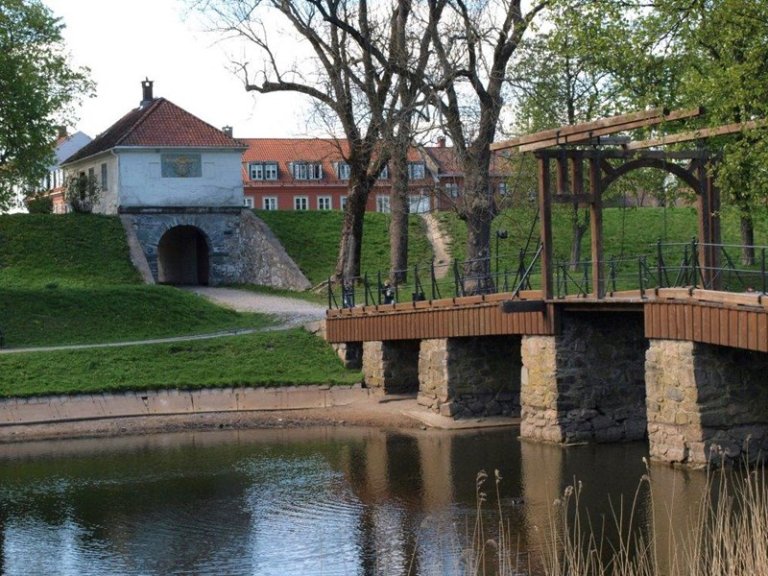
Until 1906, the only way into the Old Town from the landward side was via the Rampart Gate ravelin and through the Rampart Gate itself.
A ravelin is a projecting defensive structure in front of one of the straight sections of the rampart (curtain walls). The Rampart Gate ravelin was built at the same time as the main fortress, in 1666.
Closely guarded
To get into the town, you first had to cross the bridge over the outer moat and the guard on the ravelin. Then over the drawbridge into the Rampart Gate, and finally past a last guard post.
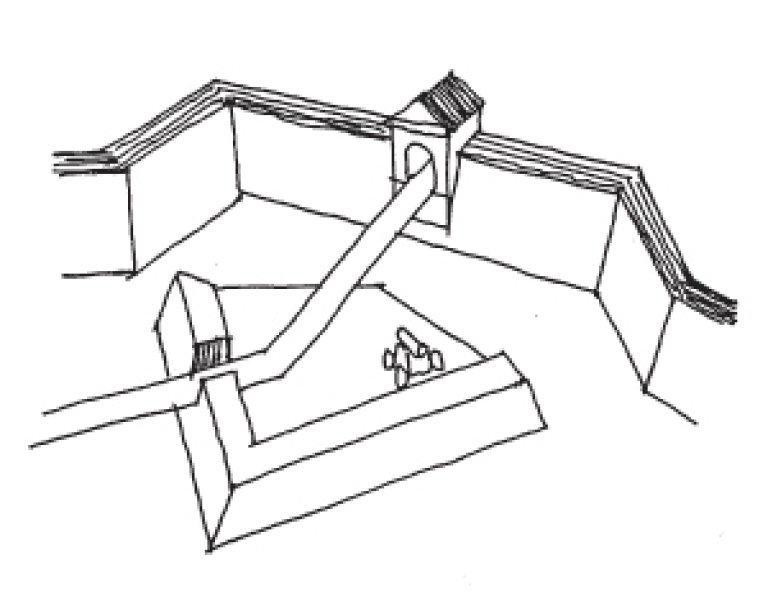
Right from the 17th century, the drawbridge from the ravelin could be raised. The bridge was pulled up every evening and only lowered again next morning. It took 30 soldiers to raise and lower the bridge.
Wood rots, bridge supports move and heavy traffic has caused many changes in the bridge over time.
Rampart Gate and guardroom
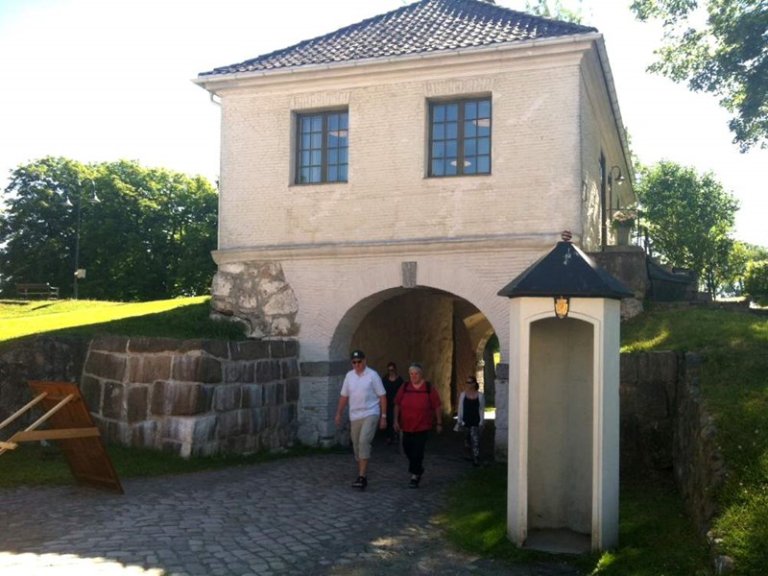
The guardroom at the Rampart Gate is an example of simple, functional military architecture. The guardroom on the Rampart Gate ravelin was built in 1747, but there has been a guardroom here since the fortress was laid out in 1666. From 1734 convicts (‘fortress slaves’) were taken over to Fredrikstad and some of them were housed in the old guardroom.
New life on historic ground
The guardroom is now a glass-blowing workshop, and a fine example of new uses for the old military buildings.
Monogram
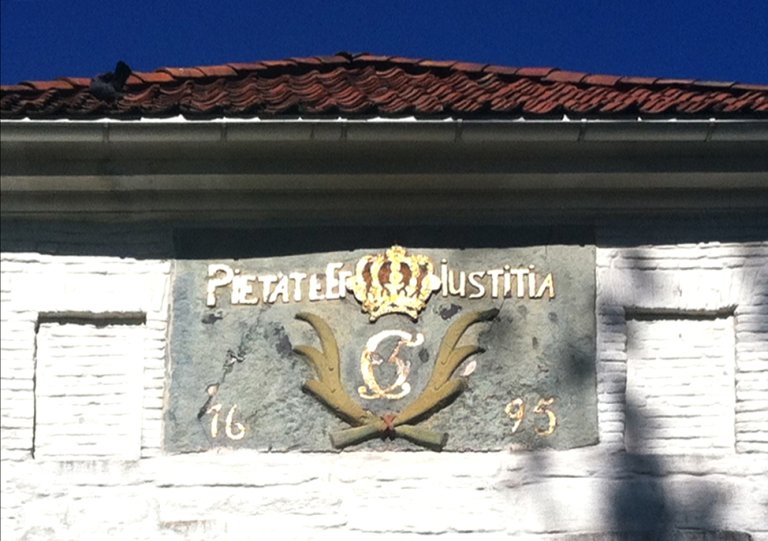
On the outside of the guardroom we see Christian V’s monogram and motto: Pietate et justitia (Piety and justice).
Rampart Gate
When the ramparts were built, there was initially a simple timber gate into the town, but the new arched Rampart Gate was completed in 1695.
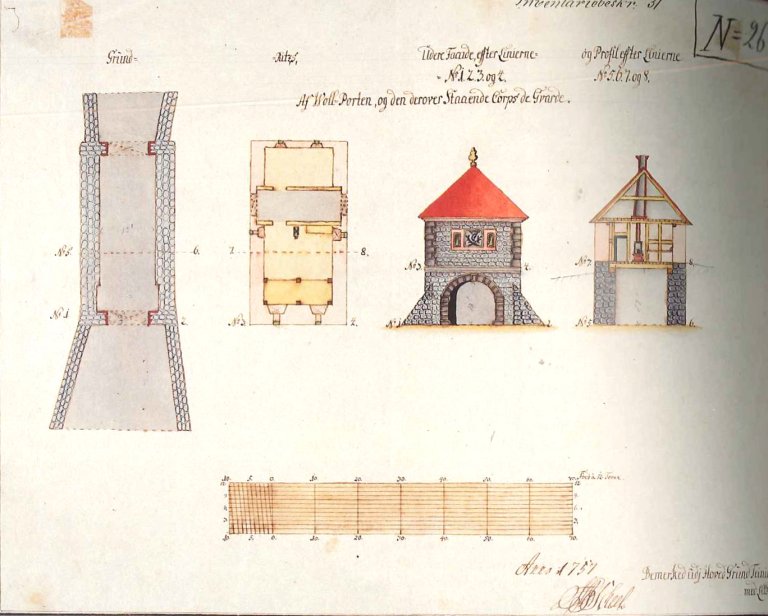
Narrow gate and heavy traffic
People, cattle and pigs passed through here every day. At times there was heavy traffic in and out of the narrow gate, which was manned by the fortress guards.
Prins Fredriks bastion
Prins Fredriks bastion, den midterste av de tre helbastionene mot landsiden.
Navnet kommer opprinnelig fra den danske kongen Fredrik III, men bastionen ble senere gitt navn etter Christian V's sønn, prins Fredrik.
En av de eldste delene
Prins Fredriks bastion er en av de eldste delene av festningsverket, og ble anlagt i perioden 1663 – 1666. Opprinnelig var det plassert 10 kanoner på bastionen, og hensikten var å beskytte mot angrep fra landsiden.
På bastionen lå tidligere Materialgården, som brant ned i 1865. Vollmesterboligen og Ingeniørgården ble deretter bygget på branntomten.
East curtain wall and exit gate
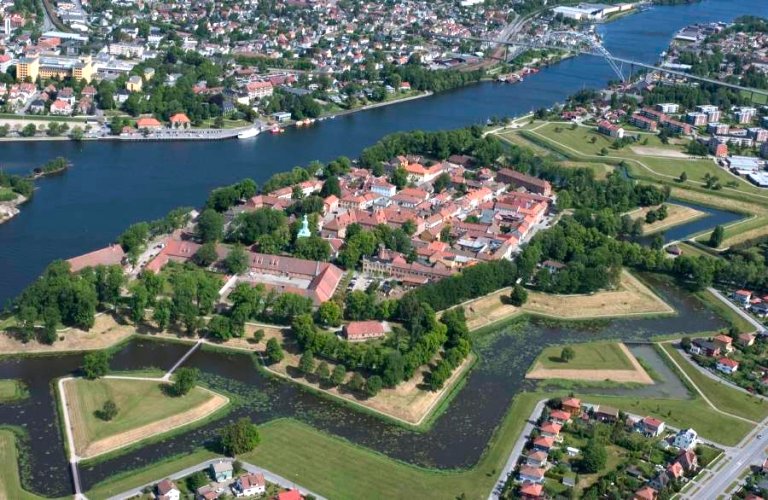
Fredrikstad Fortress and Old Town is constructed according to the ‘Dutch’ system, with high earth ramparts surrounded by wide water-filled moats.
There are routes into the Old Town from all points of the compass, north, south, east and west. There are exit gates in the curtain walls to the north, east and south, and gates towards the river in the west.
This point is the east curtin and the east exit gate.
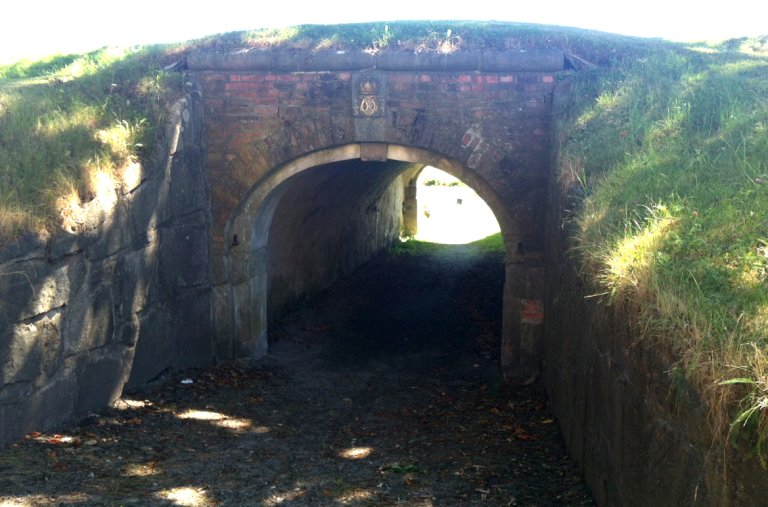
Gates for defence
When the fortress was surrounded by enemies, the defenders could attack through the exit gates, which used to be for military use only.
Linking Fredrikstad together
The gates link the neighbouring residential areas (Vaterland and Prestelandet) to the Old Town. These historic gates to Fredrikstad fortress, leading into the Old Town, were built in 1731 and 1737.
Prince Christian's bastion
This southern solid bastion is named after Christian V, subsequently after his son Prince Christian. The bastion originally had 18 cannons. The bastion previously housed an artillery smithy and gun carriage workshop. In 1802 the gunpowder laboratory was built here.
In 1885 this building was converted to a military hospital, and is currently a private clinic.
Southern curtain wall / Southern exit gate
The southern curtain wall is between Prince Christian's and Prince Georg's bastions. The southern exit gate passes through the curtain wall, and is more recently the short cut across the moat and southern entrenchment to Vaterland.
Vaterland
Vaterland developed in the 1700s as a small suburb to the city, and it was in particular sailors, fishers and craftsmen who settled there. Vaterland is currently an attractive residential area with a unique environment.
Prince Georg’s bastion
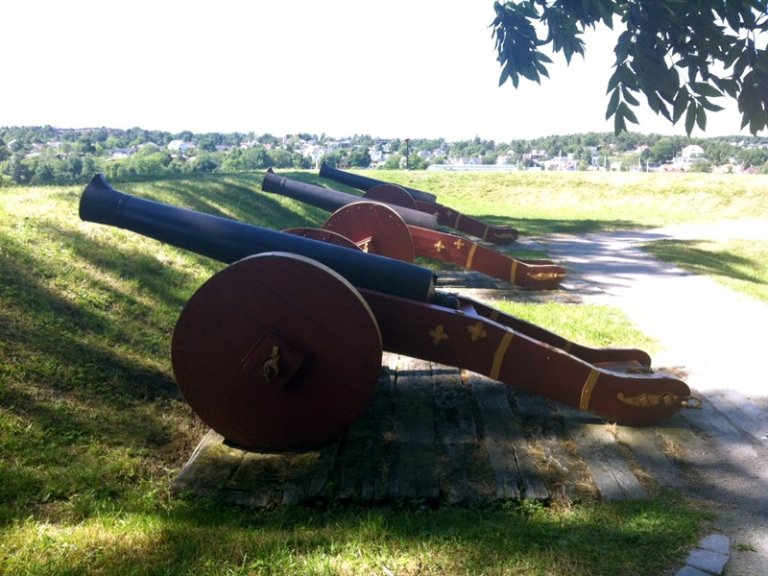
It was here the Swedes launched an attack from across the river on 3. August 1814.
The fortress was old and in poor repair, so the commandant, lieutenant-colonel Hals, gave the order to surrender.
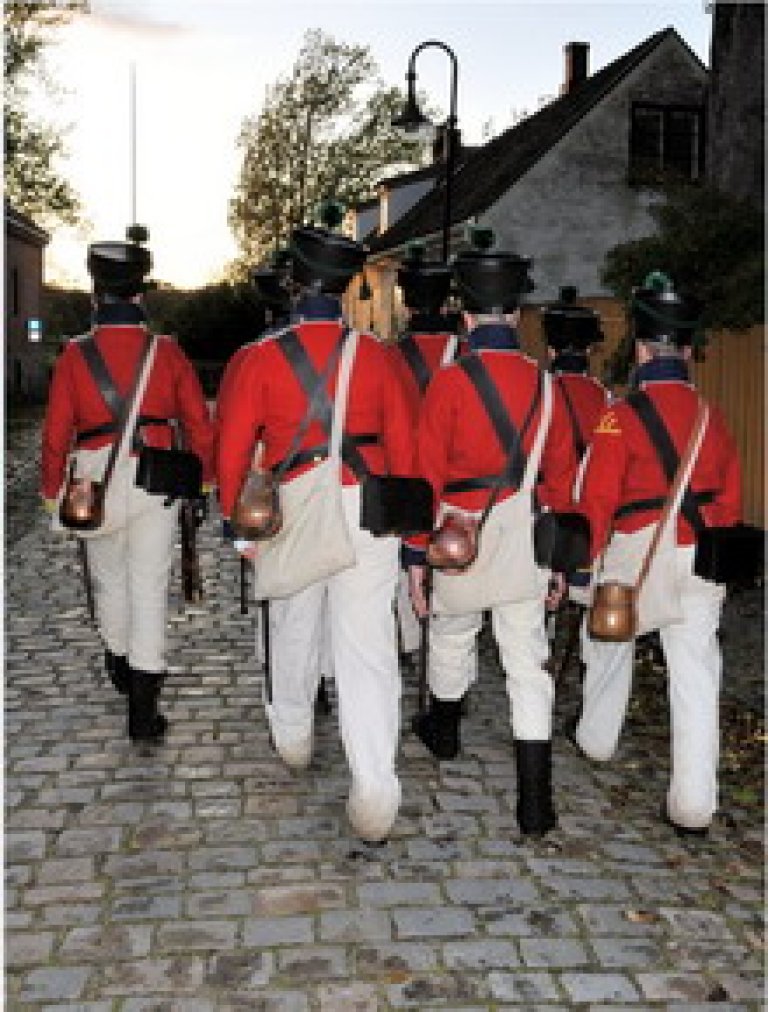
The white flag was raised early in the morning of 4 August 1814 and swedish soldiers entered the town.
Freed in 1815
It was not until March 1815 that Norwegian soldiers were again allowed to take over the fortress.
Description of the bastion
Prince Georg's bastion is named after Christian 5s youngest son. There was room here for 24 cannon, and in the middle of the bastion stands a stout powder store from 1736.
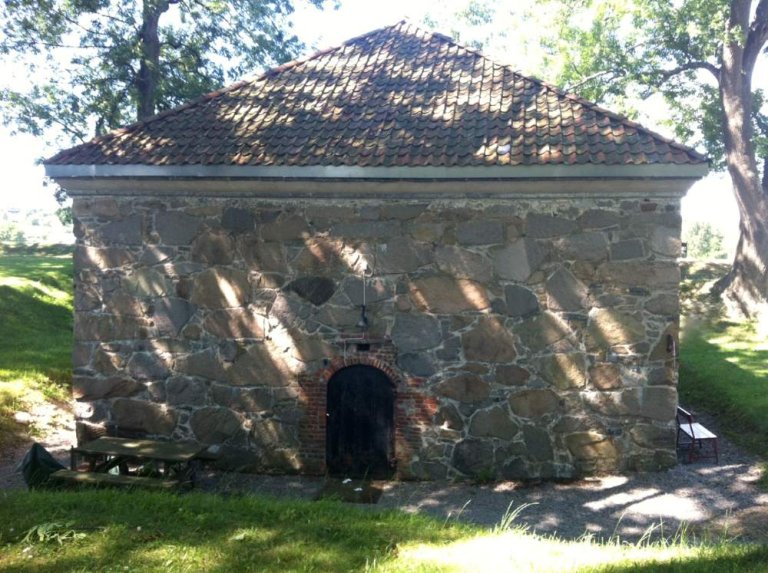
The powder store has walls two metres thick, but was still not considered "bomb-proof".
A bastion is a rectangular extension of a rampart constructed as a platform for artillery.
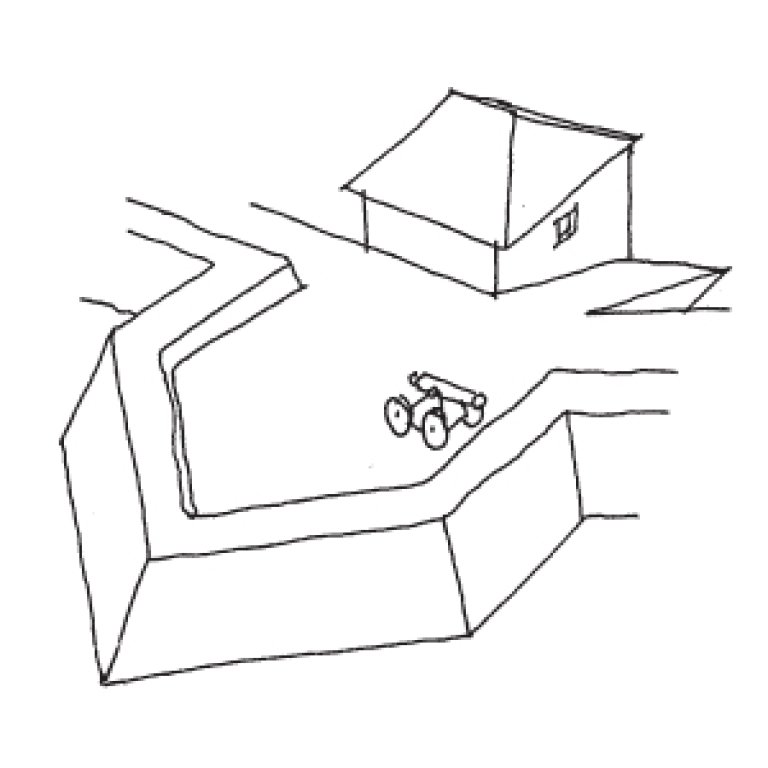
The Storehouse with its foundations and the old convicts’ quarters
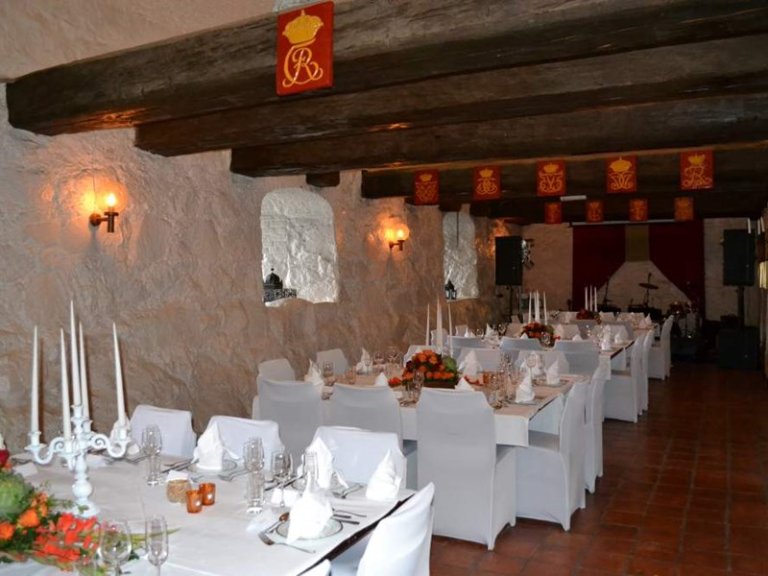
From storehouse to venerable function room
The oldest building in the Old Town, ‘The grey stone walled Storehouse’ was erected between 1674 and 1696. At that time there were provisions for the fort's crew that filled the building. Today there is new life in the historic building. Now there are excellent facilities in the basement and ground floor there are galleries and workshops.
Depot fortress
Fredrikstad Fortress - Old Town was an important depot fortress and base. Here, the storage space for supplies for the fort's own use and for the field army, fleet and for civilian use. The building was also used as a store for military supplies and equipment, and for a time in the 1930s, mushrooms were grown in the cellar.
Part of the rampart
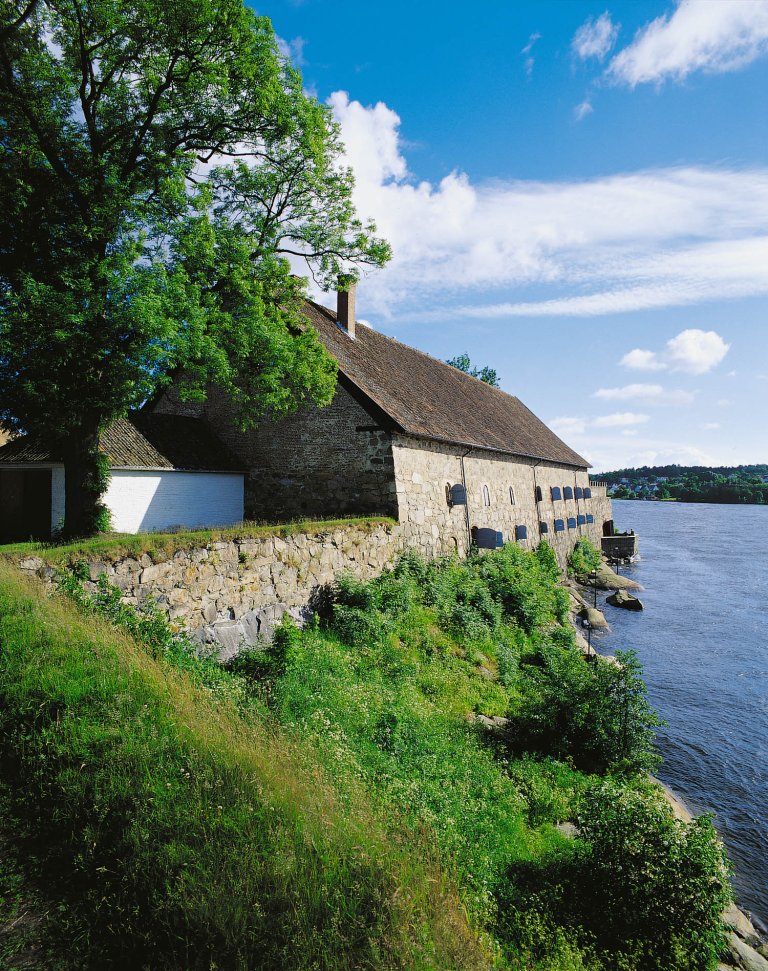
From prison to café
Inside the storehouse is the ‘Old Slaveri’, originally the main guardroom, built in 1731. From 1734, prisoners were held at the fortress, and rooms for 27 convicts were constructed in the main guardroom. There was also a small gaol in the roof.
The building was extended in the 1820s and all of it was used as convicts’ quarters. Later, it was used as a workshop and stores, among other things. There is a now a café in the building.
The commandant’s house
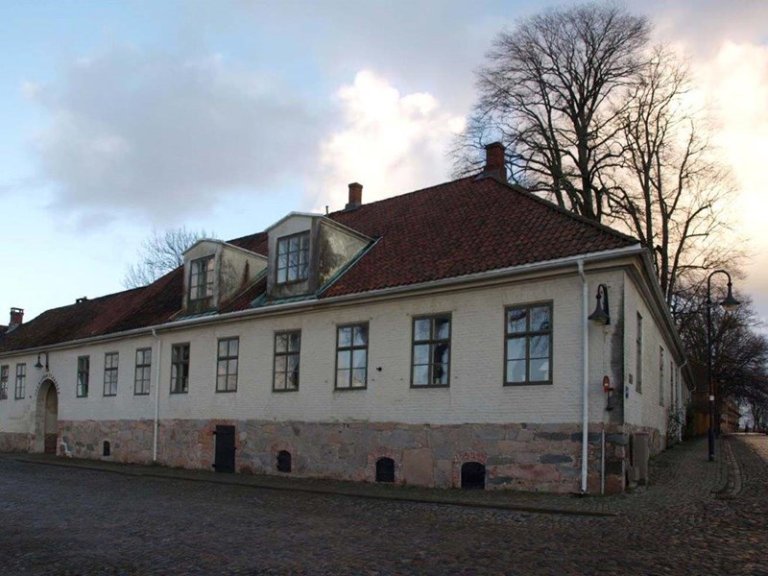
Today is The commandant’s house is a great venue for social gatherings, weddings, anniversaries and representation.
Here you can experience the commander's official residence for more than 200 years.
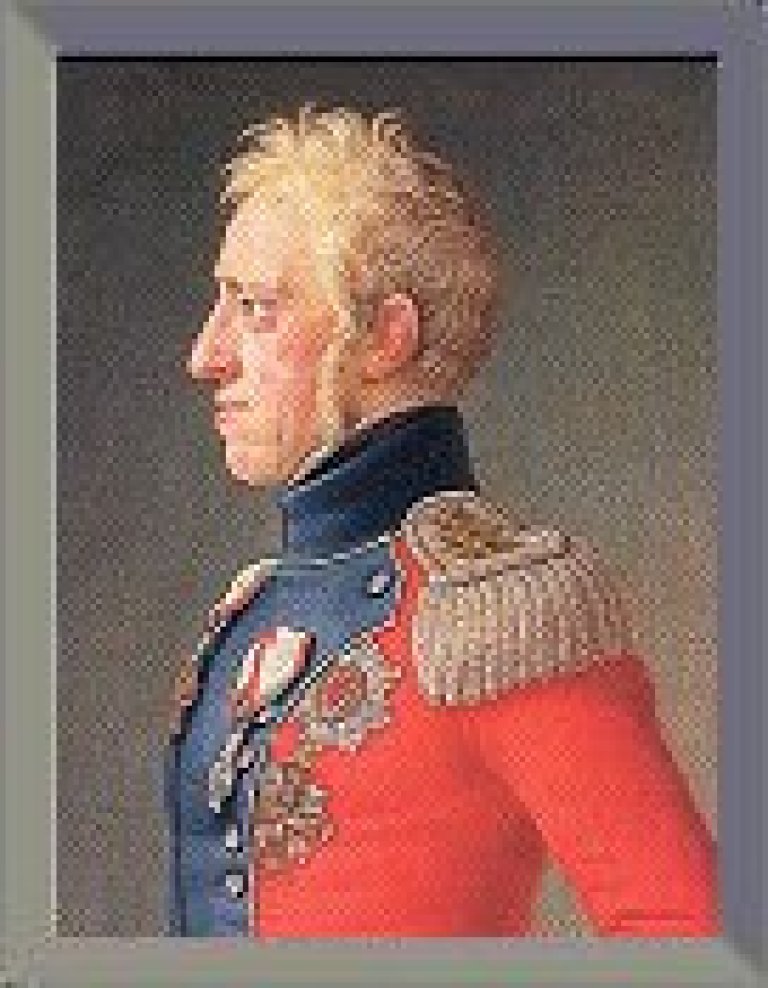
Once the finest house in the town
The old commandant’s house burned down in the great fire of 1764. Rather than build new quarters for the commandant, the state purchased this house in 1796.
The building was home to the commandants for over 200 years. The last commander moved out in 2002.
A small farm with domestic animals
The commandant’s house, along with most of the properties in the town, was laid out as a small farm with cowsheds, stables, hen-houses, brewery and barns.
The commandants also had domestic animals that were out in the town pastures every day.
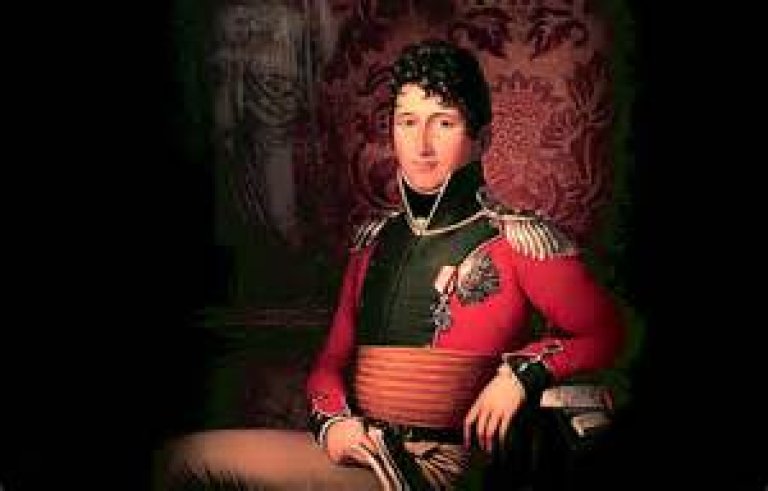
The commandant was a prominent figure
The commandants were educated and cultured people. Along with their officers’ training, they were often schooled in drawing, painting, dance and music.
The commandants often brought new skills and ideas to the communities they were posted to.
Royal visit to the military exercises in 1788
There were distinguished visitors to the commandant’s house as early as 1788.
During the great gathering of troops before the Bohuslän campaign (the ‘Lingonberry War’), Crown Prince Frederik (later Frederik VI) and the supreme commander Prince Karl of Hesse stayed here with their whole entourage.
The Convention of Moss was signed here in 1814
The commandant’s house also played a major role in the events of 1814.
Crown Prince Carl Johan stayed here on 7 August 1814 after the Swedes had conquered the fortress. And it was he who signed the Convention of Moss on 15 August 1814.
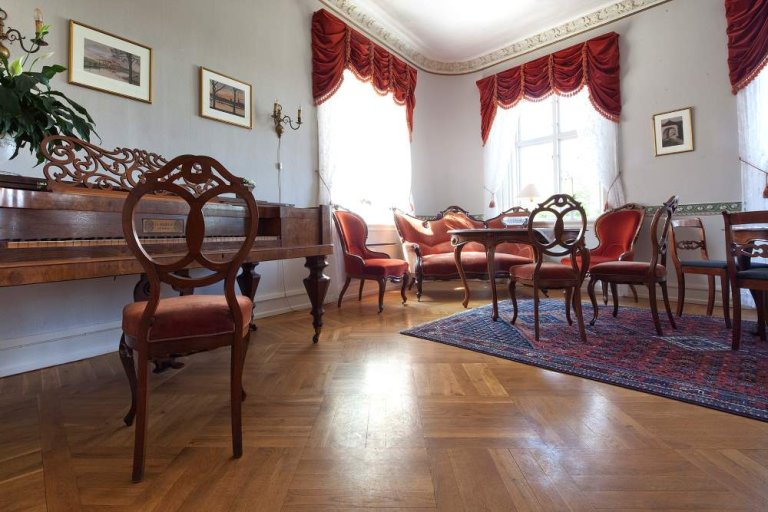
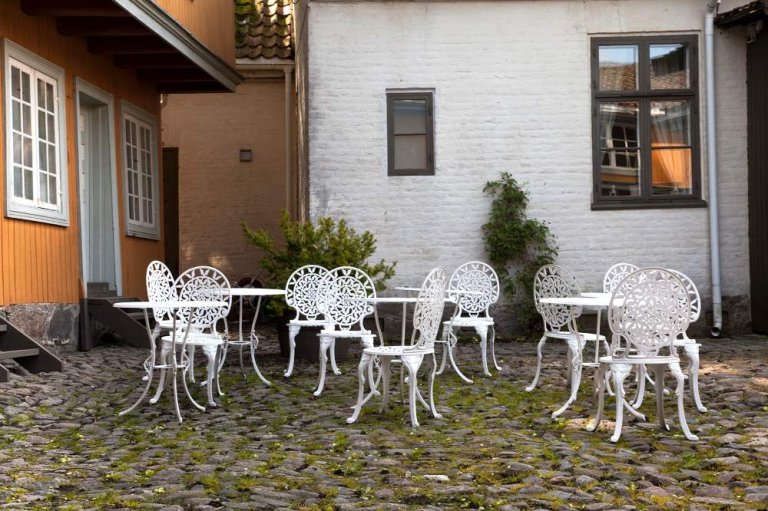
Cloth house and cloth house square
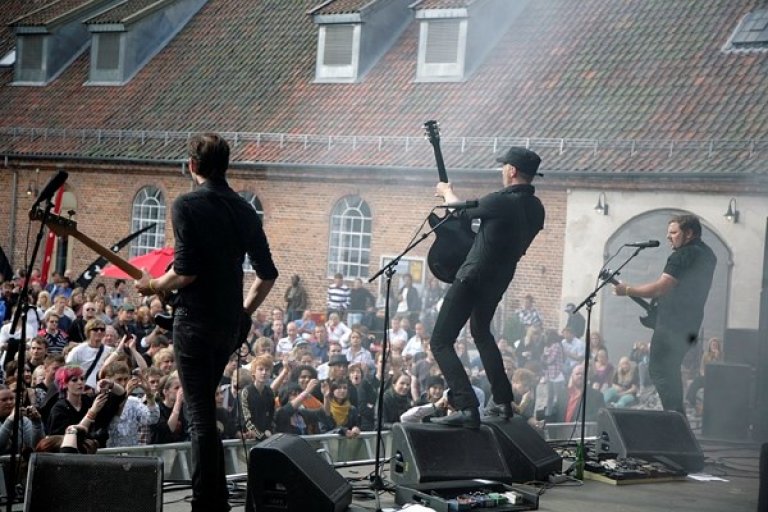
Tøihuset was in military use until 2002, and it now houses Fredrikstad Museum. The large Tøihus square has always been used to park vehicles, conduct exercises and maintain equipment.
The square is now used for concerts and other events.
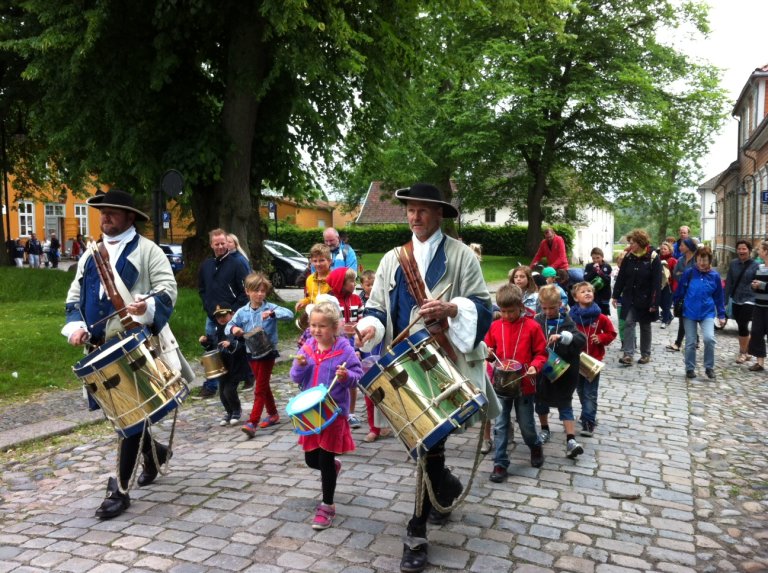
The cloth house is the building that best illustrates the role of the fortress
Fredrikstad was the only fortified town in Norway, with the whole of the town inside the defensive works. The fortress was a garrison, and a logistical base of great importance when it came to placing the army on a war footing. The primary role of the fortress was not to repel an attack from the land, but to secure all the vital resources that were in the town.
Important store place for military equipment
The great military stores were as important as the civilian resources, such as the tradesmen, the workshops and the port. Large parts of the army’s equipment and supplies were kept here in case of war.
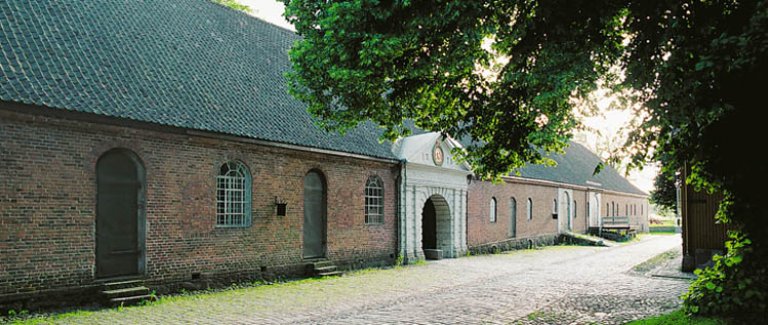
Tøihuset(the old magazine) is the most conspicuous example of this. The building was completed in 1775, and its 4000 m2 of floor area made it the largest in Norway at that time.
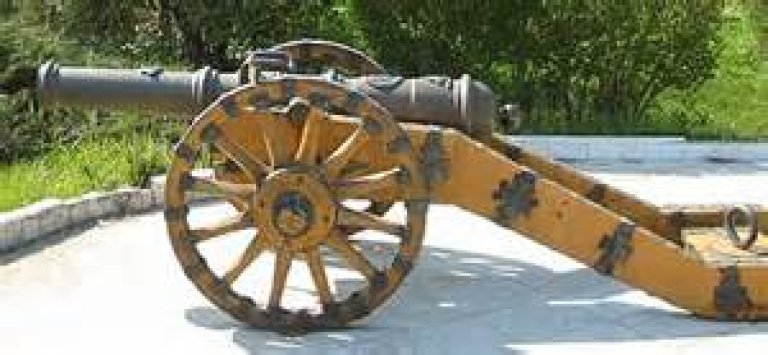
Artillery, carts, uniforms, tools and all sorts of other military equipment were stored here. Detachments from as far away as Bergen could keep their carts and cannons here. The attack was expected to hit Østfold.
The commandant’s garden
Just to the west of Tøihus square, behind a solid wall, is the garden belonging to the old commandant’s house which burned down in the great fire of 1764. In the garden stands a small yellow brick summerhouse from 1725. This is one of the few buildings to survive the great fire.
The Infantry Barracks
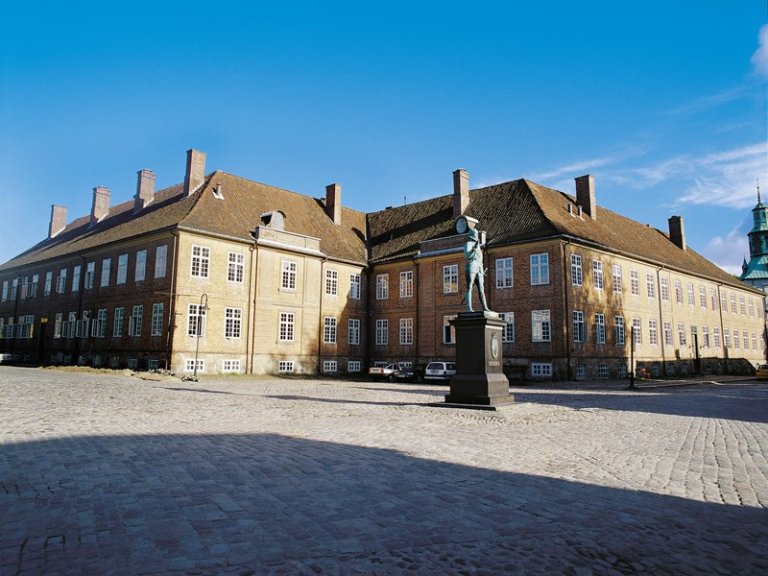
The Infantry Barracks, which rank as some of the finest military architecture in Norway.
Architecture according to the ‘calendar system’
The building is supposed to have been erected according to the ‘calendar system’, with its four wings (the seasons), twelve chimneys (the months), seven outside corners (the days of the week), and 24 panes of glass in the windows.
Take a look at the picture again - do you recognize the "calendar system"?:

New life on historic ground
Today the building is hired out for various non-military purposes.
Billeting soldiers was always a challenge for the fortress
Even when the ramparts were being built in the 1660s, the townspeople had to provide lodgings for almost 1000 soldiers. In the many periods of tension and war, the soldiers always had to stay in private houses. The barracks were only designed for the peacetime strength of the army, and not for all the extra soldiers who came in when there was a risk of war.
Erected in 1783–1787
After the great fire of 1764 the state bought the whole district to the east of the market square, and the great Infantry Barracks went up from 1783–1787. The plans were drawn up in Copenhagen, but had to be adapted to fit the site.
The middle gate
The three gates toward the river clearly show that it was here trade and traffic took place.
There is only one gate facing land. The middle gate was originally a timber gate, and was later built from brick in 1727. It bears Fredrik IV's monogram.
Just south of the gate is Platte bulwark, a small bastion the covers the wall along the river. It was built in the 1680s and accommodated six cannons.
Ferry Gate and Commission House
The Ferry Gate, one of the three gates to the river and the port.
You can see how important transport by sea was from the three gates facing the sea and just one on the landward side.
The Ferry Gate was initially made of wood, but was replaced with a brick gate in 1727. The gate leads down to the old ferry landing.
There was a crossing over the river Glomma from here long before the town was built.
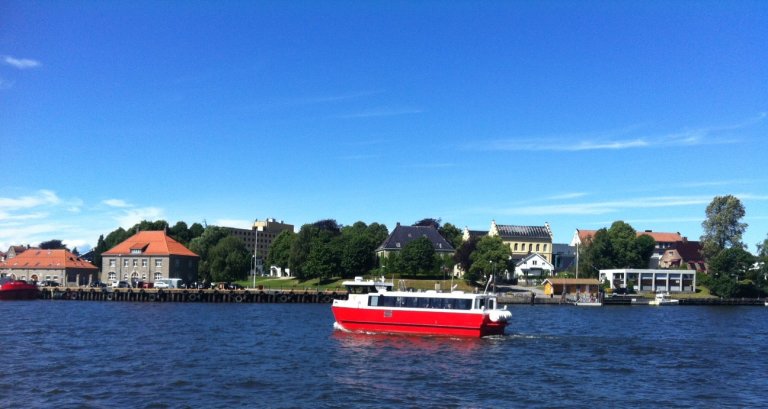
Heavy traffic
Along with the Rampart Gate, this was the busiest entrance to the town.
A road was made in 1906 through the wall and down to the ferry landing. This meant that all traffic had to pass through the narrow gate.
The Commission House – courtroom and mess
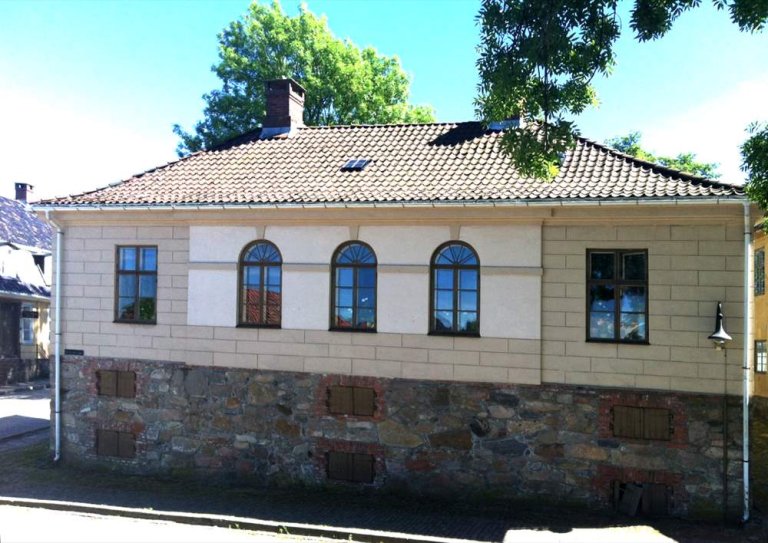
Just inside the gate is a stone building on high foundations; this is the Commission House from 1834.
This building was used as a courtroom and had its own cells for officers.
It has been used as a house since the end of the 19th century. The building may have been designed by the architect Grosch, and is in a pure and fine Empire style.
Earlier barracks
The same site used to house a large barracks, built in 1700. This covered half a block, including today’s park.
The barracks burned down in the great fire of 1764. New barracks were built in 1769, but these also burned down in 1830.
The Northern Sally Port
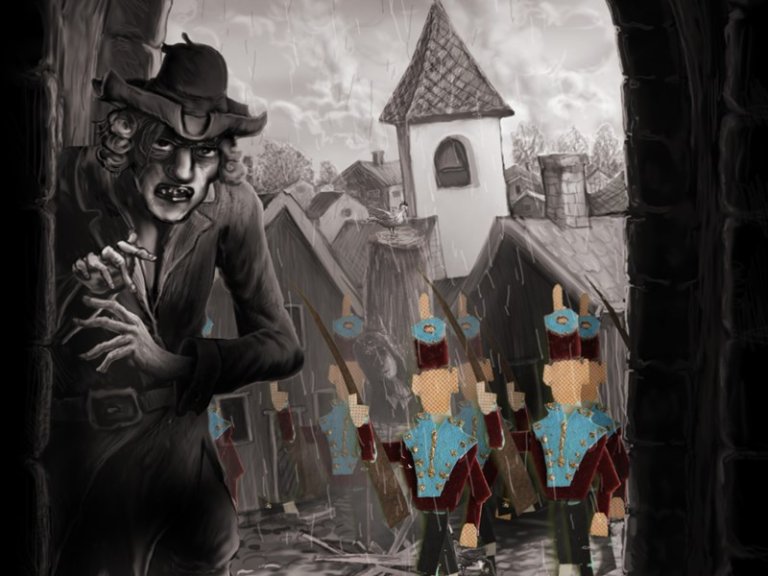
Historical light show in
The Northern Sally Port, one of three such gates of Fredrikstad Fortress, was built in 1737. The gate provides passage through the embankment between Gyldenløve’s bastion and Antonette’s battery. Inside the gate there are gunpowder cellars on both sides.
In the old days, the gate was used by soldiers to leave the fortress quickly. Today the Northern Sally Port bids a unique welcome to the fortified town.
Experience history through a sound and light show
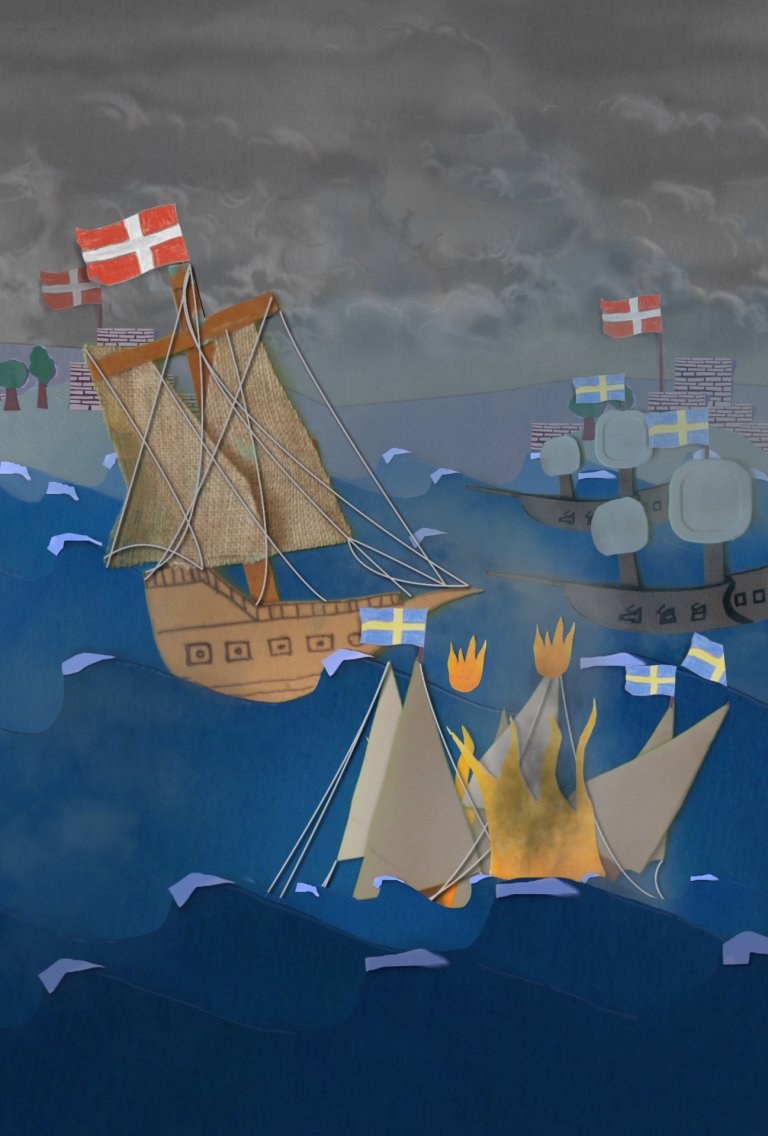
In the darkness of the almost 300 year old gate, events from the 450 year old history of the fortified town are presented in a sound and light show.
It all starts in 1567 when Fredrikstad was established. Then followed many town fires, the entry of soldiers into the town, the naval hero Tordenskiold and the “cranberry war” with Sweden, all of which helped to form the history of today’s fortified town.
A collaborative project
The art project has been realised by the National Fortifications Heritage in collaboration with the Qulthus Cultural Centre, and funded by a donation from the DNB Sparebank Foundation.
Children living in and around the Old Town have played an active part in the development work.
Gyldenløve's bastion
The northern demi-bastion is named after Ulrik Fredrik Gyldenløve, who was son of Fredrik III and governor of Norway. The bastion was built in 1665-1666, and accommodated 13 cannons.
In the 1700s a windmill was built on the bastion, but this was not a great success. Gyldenløve's bastion houses the Artillery Smithy, originally built as a guardroom in 1746 and converted to a smithy in 1807. The building is currently used by the Norwegian Defence Estates Agency National Fortification Heritage.
The Artillery Yard – the new convicts’ quarters
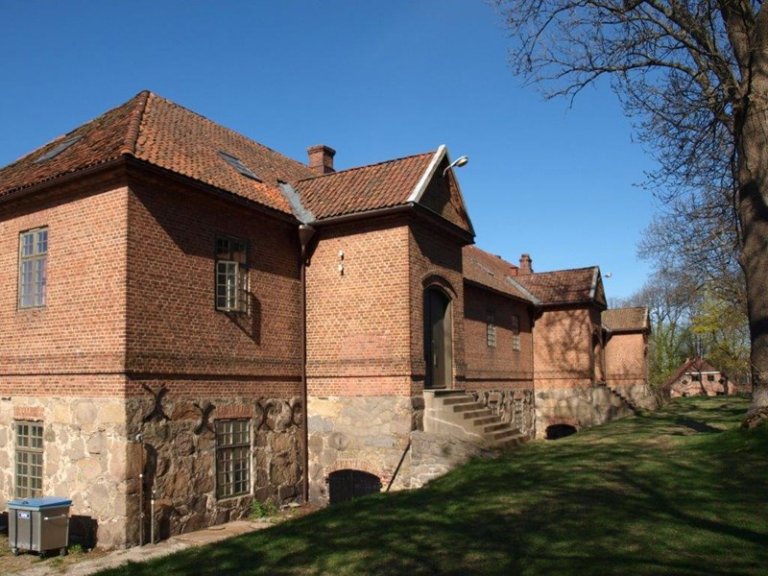
From storehouse to prison.
The Artillery Yard was originally built in 1733 as a single-storey storehouse for artillery and other military equipment.
Convicts
The number of convicts increased in the 19th century, and the Artillery Yard started to be used as quarters for them in 1825.
An extra floor was added in 1840–41 to accommodate more and more convicts. The Artillery Yard, or ‘New Slaveri’, had space for 220 convicts.
Workhouse
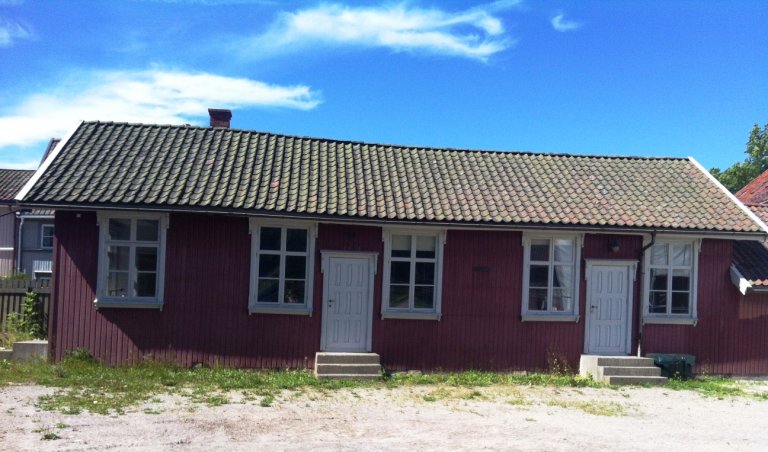
In 1844 there was a total of 266 convicts in the Old Town.
Their workhouse was opposite the Artillery Yard. The convicts earned their own money for the work they did, and to give them a place to trade, a small market hall was built alongside the Artillery Yard in 1838.
Here the convicts could also buy themselves a drop of brandy.
Other uses
After all the convicts were transferred to Akershus Fortress in 1848, the Artillery Yard was used for storage, and later also as a garrison infirmary.
At the end of the 19th century, a dining room for junior officers was established on the other side of the square.
New life on historic ground
Today, the Old Town is a living centre of culture with shops, galleries and artists’ studios and pleasant cafés.
National Fortification Heritage manages Fredrikstad Fortress and Old Town and has done so since the armed forces discontinued their activities here.
At the end of 2014 the Old Town will be restored at a cost of almost NOK 65 million over a six-year period, to serve close to 500,000 visitors and residents.
